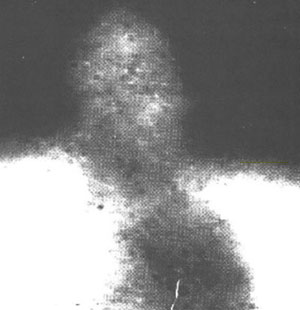|
by Philip Coppens This article originally appeared in Frontier Magazine 1.3 (1995) and was slightly adapted from PhilipCoppens Website
Our earth’s satellite, which once every moon turns around our Earth, has driven Mankind for centuries to lunacy. Seeing “the man in the moon” is but one in a long series of stories that echoes our fascination with the white disc that lights up our nightly skies.
Other astronomers from the era reported light structures, which looked remarkable similar to those observed on cities on Earth. In 1869, the Royal Astronomical Society of Great Britain started a three year long investigation, after numerous sightings of anomalous lights in the Mare Crisium part of the Moon.
O’Neill spoke about his discovery in a rather careful tone, suggesting that this was a “natural bridge” which “somehow” had formed itself, this in the course of just one night. He reported his find to the Association of Lunar and Planetary Observers, but his report was mocked and attacked. One month later, the legendary British astronomer Dr. H.P.Wilkins confirmed the findings of O’Neill. Patrick Moore, another of the leading figures of English astronomy, confirmed the observation.
In the 1970s, NASA wanted to investigate what they had labeled “Lunar Transient Phenomena” (LTP): suddenly visible objects on the surface of the moon (above image). The project was not a success as the project members did not adhere to the project scope. Nevertheless, NASA offered an explanation to these phenomena; it involved gases that escaped from lava, which occurred at sunrise, resulting in ultraviolet light, as well as other particles that create the luminous effect. And if this was not the correct or only explanation, then it could also be due to volcanic activity.
The professor asked what Armstrong meant when he stated they had been “warned”.
The professor prodded that NASA had nevertheless sent further missions to the Moon, following Armstrong’s visit.
Later, Armstrong would deny that this conversation ever occurred.
In August 1954, Adamski had observed
large hangars, harboring gigantic spacecrafts. Howard Menger,
another contacteé, stated that he had gone to the Moon in August
1956, where he had seen many buildings. It seems that July-August,
even before Armstrong’s visit to the Moon, was already the Moon’s
top season for earthly tourism. During a second visit to the Moon, Menger was allowed to take photographs, which he published in his
book
From Outer Space to You. Menger also reported that he had seen
visitors from Russia, Japan and Germany, all visiting the Moon.
To reach the Moon, the Nazis had built an “exo-atmospheric rocket”, measuring 15 by 50 meters, with an engine powerful enough to allow this form on interplanetary exploration possible. The basis itself was said to measure 60 by 45 meters, splashed out over ten floors. NASA was said to know about the basis, but had elected to keep it a secret. Apparently, its inhabitants did not require space suits to walk on the surface of the Moon: normal clothing was sufficient.
These tales are far away from the much more mundane conquest of the Moon. Nevertheless, some mystery surrounding the Moon has always intrigued scientists. The front page of the November 2 1966 edition of The Washington Post read:
The Lunar Orbiter 2 had photographed a lunar area of approximately 30 by 50 kilometers. The photo apparently showed six or seven towers, appearing in a specific geometric pattern, rising from the Mare Tranquilis. Their pointed shadow indicated that they were either conical or pyramid-shaped. (image left)
One of the towers measured an impressive 213 meters. NASA countered that the photographs did not show anything of any interest… whatsoever. Perhaps in an effort to merely embarrass the Americans, the Russian magazine Argosy offered the opinion of the Russian space scientist Alexander Abromov. He stated that the Russian Luna 9 had, on landing on the Moon on February 4 1966, taken some bizarre photographs: structures that stood in the landscape in a certain pattern.
One decade afterwards, in 1976, George Leonard published Somebody Else is on our Moon. Leonard stated he done extensive research in NASA’s archives and had found several photographs, including some of the first, unmanned mission to the Moon. Leonard’s effort was followed by Fred Steckling, who wrote We Discovered alien Bases on the Moon in 1981. It was an analysis of 125 photographs, on which Steckling pointed out “evidence” of buildings and other constructions on the surface of the Moon. Major parts of this publication, privately published, were later reused by David Hatcher Childress in his Extraterrestrial Archaeology.
The Shard was apparently more than 1.5
kilometers high. He stated that if it was natural, it would be the
miracle of the universe, defying all known patterns of erosion. But
the Shard was apparently topped by “the Tower”, which rose no less
than five miles above the surface of the Earth. Such massive
construction projects were possible because of the lower
gravitational pull that existed on the surface of the Moon. Hoagland
and team stated that the Tower had been seen by Armstrong and team…
and had even been filmed by them. All these structures were
apparently made from glass. Though fragile on Earth, in the void
environment of the Moon, glass would achieve the same rigidity as
steel is known to have on Earth.
What are we to make of these stories? The photographs of most if not all of these claims are grainy at best, and impossible to view at worst. In the case of the claims of Sir John Herschel, it seems that the entire event of his “discoveries” on the Moon was nothing more than a hoax, run by a newspaper. The New York Sun ran the article about Herschel in late August 1835. The article immediately invited skepticism.
On August 29, 1835 the New York Commercial Advertiser argued it was a hoax. Authorship of the hoax was attributed to Richard Adams Locke, a Cambridge-educated reporter working for the Sun. Locke never admitted to being the author of the hoax, and the Sun equally never conceded it was a hoax.
On September 16, 1835, the Sun did publish a column in which it discussed the possibility that the story was a hoax, but it never confessed to anything. Quite the contrary.
And as with all of these stories, it will only take a culture of openness and trust – and only then return visits to the Moon – before we can compare the two versions of history: the official version, and the alternative version.
|

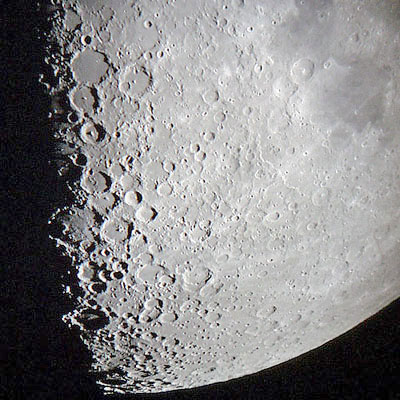
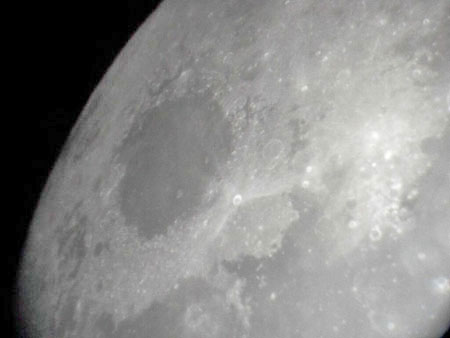
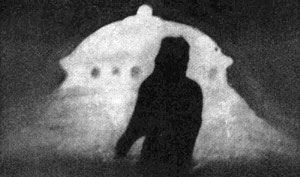
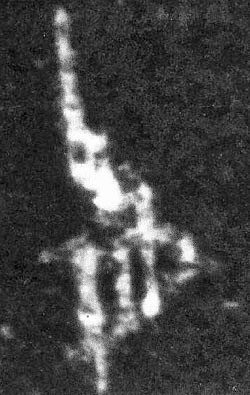
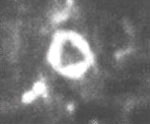 Specific attention was given to
the Ukert crater, a crater which is
the closest part of the Moon to Earth. Hoagland’s contact with
geologist Dr. Bruce Cornet resulted in the observation that the
crater apparently contained a triangle. Cornet confirmed that this
could not be a natural event, but was proof of an artificial origin.
Cornet also stated that the structure labeled “the Shard”, visible
on a photograph of the Lunar Orbiter III in 1967, was the best
available evidence that there were enigmatic – artificial –
structures on the surface of our Moon.
Specific attention was given to
the Ukert crater, a crater which is
the closest part of the Moon to Earth. Hoagland’s contact with
geologist Dr. Bruce Cornet resulted in the observation that the
crater apparently contained a triangle. Cornet confirmed that this
could not be a natural event, but was proof of an artificial origin.
Cornet also stated that the structure labeled “the Shard”, visible
on a photograph of the Lunar Orbiter III in 1967, was the best
available evidence that there were enigmatic – artificial –
structures on the surface of our Moon. 